How to make a DIY aquarium filter?
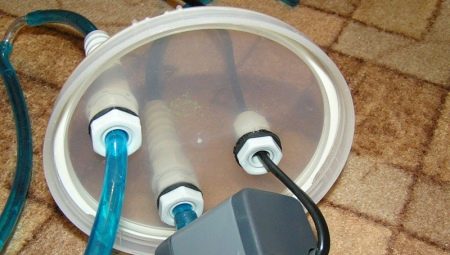
To keep your aquarium clean, a filter is essential. Of course, numerous variations are sold in specialized stores, but homemade designs are no less effective.
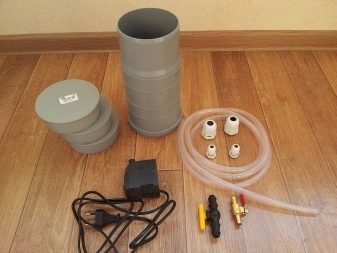
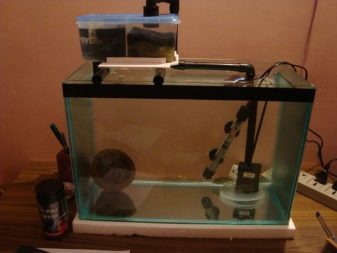
What is required for manufacturing?
To make a high-quality filter for an aquarium, you need to understand the basic requirements for it: not only to purify the water from dirt particles, but also to enrich the water with oxygen. Often, pharmaceuticals are immediately added to the device, which will have a beneficial effect on the life of the inhabitants of the aquarium. All filters are usually subdivided into several categories, so the list of used materials at hand is determined depending on the chosen design. Let's get acquainted with them in more detail.
- Bottom filter, as you might guess from the name, it is located right at the bottom of the fish dwelling. It has a large number of holes from which air enters, as a result of which water is purified from turbidity. The bottom filter must be installed before the fish populate and the tank is filled with water.
- Internal filter fixed inside the aquarium. It is a combination of a filler placed, for example, in a plastic bottle, and a compressor. This variety quickly becomes dirty and no longer cope with the work, therefore it requires regular checks.
- Outdoor filters in many ways similar to internal, but located outside the aquarium.
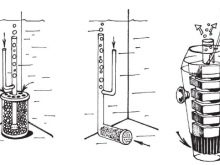
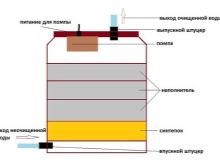
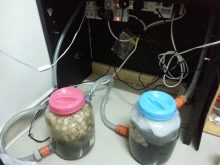
What can serve as a filler?
To begin with, there is another classification of filters, depending on what kind of filler is used and from what contaminants the water is purified.
- Mechanical cleaners Eliminate turbidity and floating particles that rise from the bottom due to the compressor and the movement of the inhabitants of the aquarium. Such dirt, decomposing, gradually forms turbidity, therefore, you cannot do without a filter.
- Chemical filters help purify water from organic substances, that is, nitrates or phosphates. Like mechanical devices, they require regular cleaning.
- Absorption chemical filters cope with waste from aquatic life. They are necessarily washed under running water.
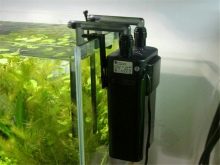
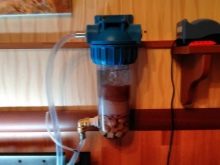
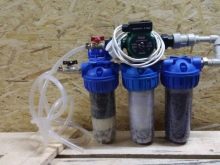
The filler can be a variety of materials that are readily available at pet supply stores.
- First of all, we are talking about about foam or synthetic winterizer parts, for example, a sponge... It is cheap, it can take any shape and simultaneously work as a biological and mechanical filter. However, the pores are an ideal breeding ground for bacteria, which can in no way be called an advantage of this material. Regularly, the sponge will have to be washed from mucus and sludge, and also changed quite often.
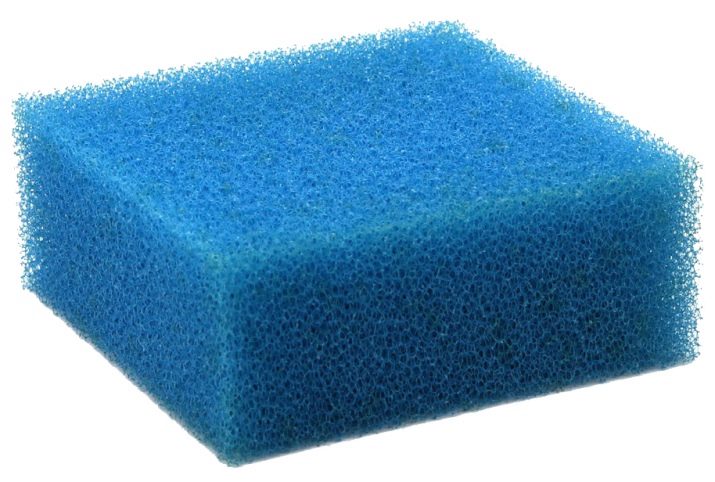
- Filter wool is also considered an inexpensive material. Its advantages include reusability, ease of cleaning, and reliability. It is better to use cotton wool at the final stage of mechanical cleaning.

- Ceramic rings allow to evenly distribute water flows, thereby ensuring the movement of oxygen.

- Bioballs are made of plastic. On the move, they uniformly wash the filter media and provide a good basis for the settling of the necessary bacteria.
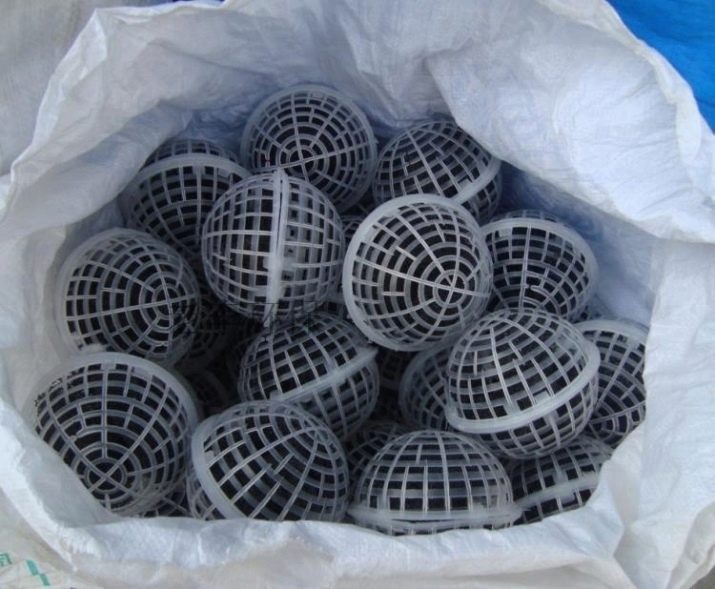
- Sintered glass sold in the form of small balls, the diameter of which is about 14 millimeters. During the baking procedure, they develop pores in which beneficial bacteria appear.
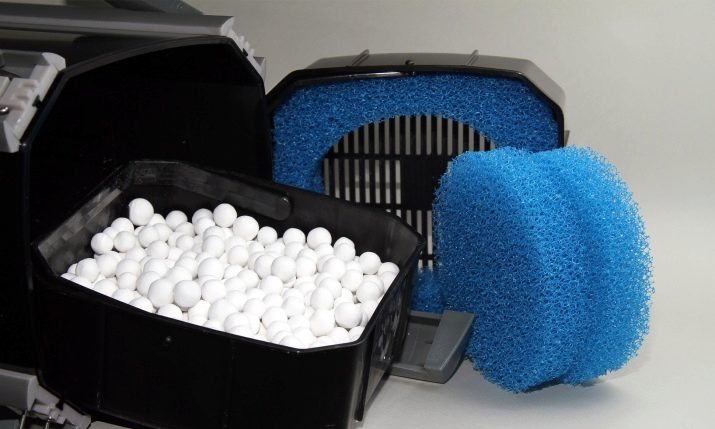
- Ceramic straws allow bacteria to colonize in small pores.
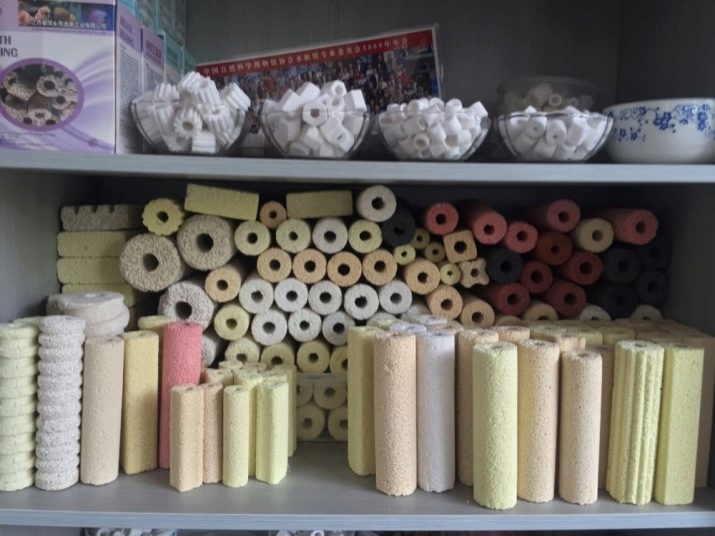
- Zeolite Is a very cheap material that perfectly absorbs all ammonium from water. Thanks to this sorbent, it will be possible to quickly eliminate nitrates in water.
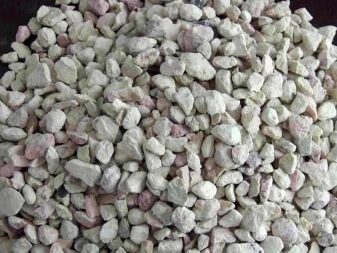
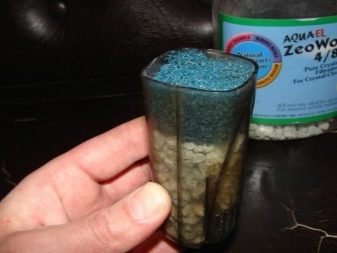
- Carbon filler quite often used for filtration in an aquarium, but only under certain conditions. Activated carbon with small-diameter granules and enough pores to absorb dirt and turbidity is suitable. It is recommended to use carbon filler only in a newly launched aquarium.

- A good solution is to use peat - as natural, effective and budgetary as possible. This material not only reduces the number of fungi, but also lowers alkalinity.
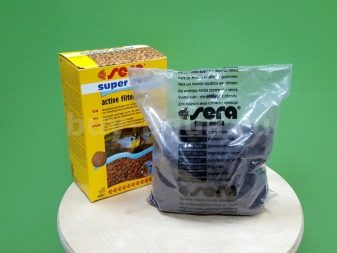
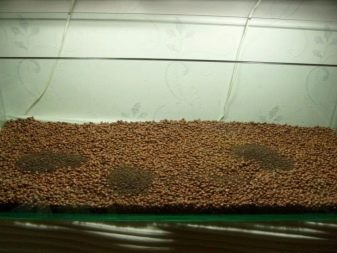
Important! The filler can also be sandy. In this case, river quartz sand is simply washed and boiled. We must not forget about synthetic fabrics, for example, nylon or nylon.
How to make?
To assemble a filter for an aquarium with your own hands, you need to decide on a filtration method, as well as purchase components sold in ordinary hardware stores and pet stores.
Interior
A homemade aquarium internal filter can be made in various variations. For example, to create it you will need a plastic container with a lid, for example, used for storing cereals, a regular sponge or thick porous material, a sealed water pump with a fitting that can be attached to the container lid, a material for biological filtration, and several suction cups with adhesive resin. Biological filtration can be carried out with ceramic rings or granules, or with ordinary cotton wool. It is worth adhering to the following algorithm of actions:
- holes are cut along the entire perimeter of the container on the edges; their main purpose will be to absorb water;
- further, a sponge is placed on the bottom, which will deal with the rough cleaning of the liquid; directly on it is a material that contributes to the fine purification of water - ordinary cotton wool or materials for biological filtration;
- a hole is created in the container lid, corresponding to the diameter of the injection nozzle; the latter is hermetically inserted into the hole and additionally fixed with resin or silicone;
- a pump is attached to the fitting, the task of which is to create compression inside the container;
- finally, several suction cups are glued to the top of the sidewall of the container;
- the finished filter is either placed on the bottom of the aquarium or fixed from the inside on the wall of the container; if the pump outlet is supplemented with a plastic nozzle with a tube, it will also be possible to provide aeration of the contents of the aquarium.
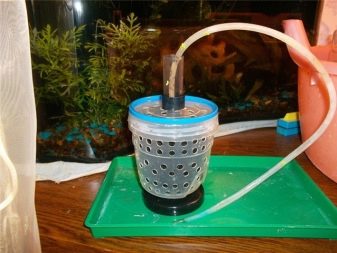
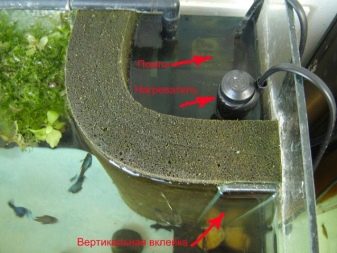
External
An external aquarium filter is as easy to make as an internal filter, but it will take a little longer. It is recommended to use a tall plastic canister or a piece of a wide diameter garden pipe as the main container. So, the production of an external filter will be carried out as follows:
- first of all, a hole is cut at the bottom of the canister, and a fitting with a one-way valve is inserted into the resulting hole; the part can be made of plastic or metal;
- further, several holes are cut in the cover, in which the electric pump and the water outlet valve will be located;
- the pump is fixed on the inside of the cover so that the fitting easily enters the prepared hole;
- further, you will have to combine all the filter material in small cassettes, whose diameter will be slightly smaller than the diameter of the canister; it is convenient to collect them from plastic flower pots, the extended top of which is cut off;
- a hole for water is cut in the bottom, and the cassette itself is filled with filter materials;
- the first cartridge can be filled with a sponge, and then placed in the canister so that it is slightly higher than the adapter equipped with a release valve;
- the second cartridge is filled with fiber, cotton wool or synthetic winterizer or other material for biological filtration; inside the canister, it is fixed in such a way as to be below the pump;
- additionally, the body should be sealed with resin or silicone; adapters are fixed with tubes or hoses, their length is determined from the depth of the aquarium and the distance at which the filter is located;
- the external filter will work due to the pump; the latter will create pressure, which promotes the suction of the liquid into the canister, and the water, after going through the filtration stages, will return to the aquarium.


Starting work with an external filter, you should first carry out a test mode for a whole day to make sure that the canister used is absolutely tight. The pump should be selected depending on the volume of the aquarium itself.
If the volume of the tank corresponds to 70 liters, then it is better to take a pump with a capacity of 300 liters per hour, and for a 200-liter aquarium, a capacity of 1000 liters per hour is required.
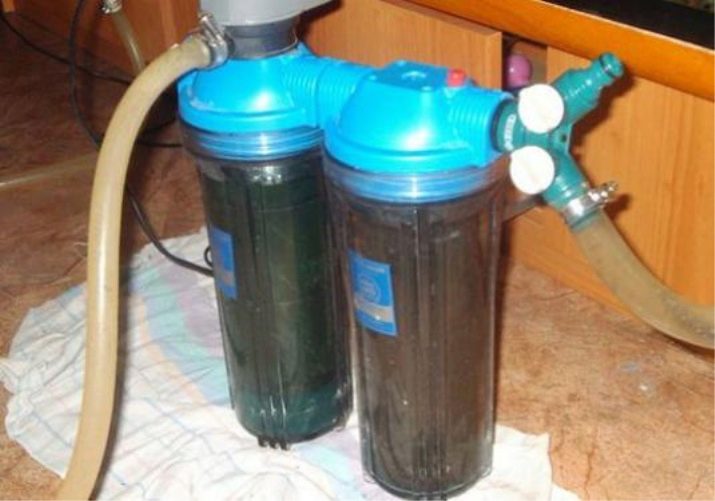
Donny
The bottom filter works by using the correct soil. Water passes through a sand or similar filter, thereby being roughly purified. To manufacture the device, you need a pump, conventional tubes and tubes with holes, and a compressor. The manufacturing process is as follows:
- parts with holes are laid under the ground, and a plastic mesh with small holes is placed on top of them; its task will be to prevent soil from entering the holes of the pipes;
- the pump or compressor is fixed close to the surface.
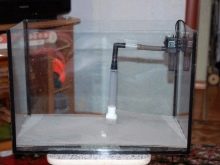
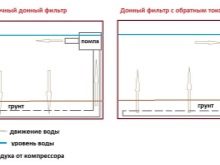
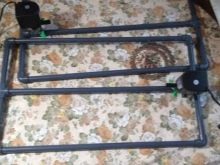
Regardless of the design chosen, the filter must be cleaned regularly. If you neglect this procedure, then at first he will cease to cope with the task at hand, and then he will generally begin to pollute the water. The frequency of cleaning is determined as needed, namely:
- the smaller the device itself and the larger the amount of work, the more often the procedure should take place;
- the need for flushing, as a rule, signals a deterioration in the quality of water purification.
Important! Small filters will have to be rinsed once a week, while large structures will need to be rinsed once every few months. Water at room temperature must be used.
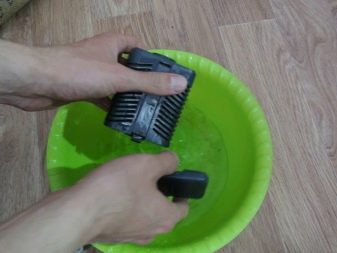
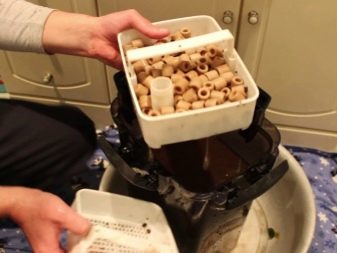
How to make an external filter for an aquarium with your own hands, see below.








